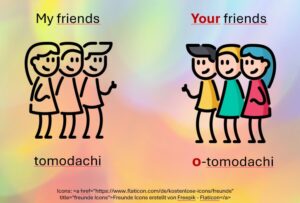 The power of ”o” in Japanese: More than just a prefix
The power of ”o” in Japanese: More than just a prefix
(April 10th 2025)
Last week's post was about hanami (flower viewing) - and I promised to explain why it is usually called ‘o-hanami” in Japanese.
Language is more than just words - it reflects culture, values and relationships. In Japanese, the honourific prefix ‘o” is a perfect example of how language shapes interactions and conveys respect.
Used in front of nouns, ‘o’ adds politeness and elegance to everyday words. It also expresses respect and appreciation for things, which is why hanami becomes ‘o-hanami’. Even if you are not familiar with the Japanese language, you have probably come across the word ‘sake’ (alcohol), which is almost always called ‘o-sake’ in Japanese out of courtesy.
The 'o' also reflects Japan's deep-rooted culture of hierarchy and respect for others. By adding the prefix 'o', speakers elevate the status of the person they are addressing or referring to.
Here are two examples: If you want to know someone's name ('namae' in Japanese), you ask for their 'o-namae'. When giving your own name, you use the term 'namae' and drop the 'o'. The word ‘tomodachi’ (friend) also illustrates the principle. When talking about other people's friends, you add an 'o' ('o-tomodachi') to show your respect. When speaking about your own friends, you politely skip
the prefix to convey a sense of humility.
Using the honourific ‘o” in this way helps to maintain harmony in social and business interactions - ensuring that respect is not only expressed, but also felt.



